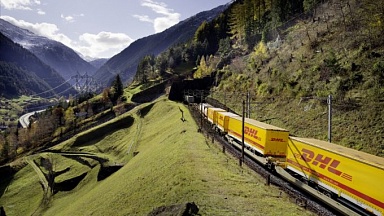The European Rail Freight Association (ERFA) has published its manifesto covering the key issues it believes must be addressed by the European Institutions and Member States during the latest legislative cycle.
The manifesto identifies a number of policy objectives that should be focused on, including fixing infrastructure, achieving the Single European Railway Area, and improving rail freight’s competitiveness.
By prioritising these issues, the ERFA believes that European institutions and member states can help create a more robust and efficient rail freight network.
The ERFA emphasises that achieving these goals will require a coordinated approach that integrates both financial and legislative efforts.
The association says it is crucial that any measures taken address at least one of these core objectives to ensure the sustainable development of the sector. Moreover, ERFA calls for a unified effort between national and European policymakers and the rail freight industry to ensure that all efforts contribute to the greater good of the industry.
The first issue highlighted in the manifesto is the urgent need to modernise and complete the Trans-European Transport Network (TEN-T).
ERFA argues that this project is key to improving rail infrastructure across the continent. In addition to completing the TEN-T, it is equally important that Temporary Capacity Restrictions (TCRs), which result from infrastructure works, be optimised to minimise their impact on rail freight operations.
Switzerland’s approach, which involves financially compensating Railway Undertakings (RUs) during TCRs, is highlighted by the ERFA as a model for other European countries to follow.
Ensuring infrastructure renovation and completion, while supporting the financial well-being of RUs during periods of reduced capacity, is fundamental to maintaining operational efficiency and avoiding unnecessary disruptions to supply chains.
Another key area of concern is the current Track Access Charges (TAC) regime. The ERFA is calling for a reassessment of the rules governing TAC, which refers to the fees paid by rail operators to access the network.
The manifesto argues that the existing system is outdated and must be reformed to support the shift from road to rail, which is essential for reducing emissions and promoting sustainability. On top of this, to provide rail operators with the predictability they need to invest and plan for the future, the ERFA advocates a multi-annual stable TAC framework.
The German TraFöG (Track Access Charge Subsidy Act) is highlighted as an example of effective policy that supports rail freight operations. Furthermore, ERFA insists that TAC policies should benefit the entire rail sector, rather than subsidising specific companies or market segments, to promote industry-wide growth.
In addition to infrastructure and access charges, ERFA places a strong emphasis on the need for the European Rail Traffic Management System (ERTMS) to be prioritised.
However, its deployment has been slow, and ERFA warns that without reliable implementation plans, the project will continue to lag behind. The manifesto calls for coordinated plans that align with the availability of on-board ERTMS units to ensure smoother integration across the network.
Moreover, ERFA stresses the importance of harmonised and simplified test specifications, as current complexity is hindering progress. One of the most pressing concerns is the cost of implementing ERTMS technology, especially for on-board units, which do not provide immediate value to RUs.
As a result, ERFA calls for these costs to be fully financed through public funds. To further support the adoption of ERTMS, ERFA argues that no new public investments should be directed towards alternative technologies until ERTMS is fully implemented across the continent.
Finally, in parallel with these infrastructure and technological upgrades, ERFA’s manifesto also stresses the importance of completing the Single European Railway Area (SERA).
This goal involves reducing bureaucratic hurdles and simplifying the legal and regulatory frameworks governing rail freight operations across Europe. ERFA believes that unnecessary bureaucracy continues to hinder the efficiency of cross-border rail services, and that efforts should be made to streamline processes such as licensing and certification for both railway operators and rolling stock.
Simplifying language requirements and certification processes, says the ERFA, will allow for more accessible and efficient international rail freight services, which is essential for fostering a more integrated and unified rail system.





